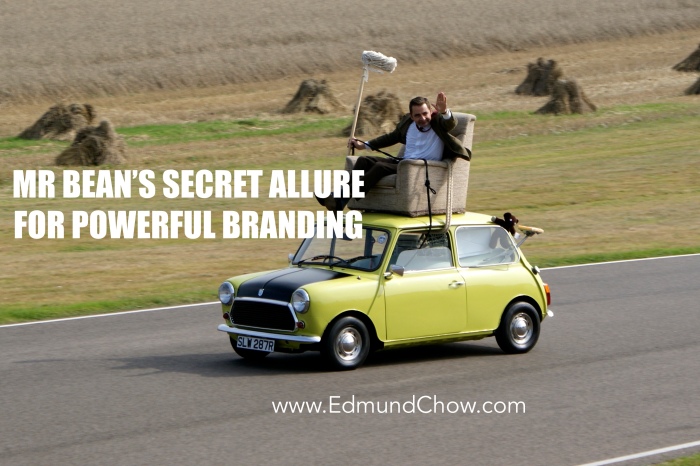Imagine the allure of the Red Riding Hood story for children, or James Bond for adults. Or take a look at Mr Bean who is known across the world, who is so famous that even without the need for English as a tool for communication is understood.

Now, imagine that your business can harness the power of stories to engage and retain customers. Or imagine marketing your service and product so powerfully that your customers are your brand ambassadors like Apple, Nike or even Samsung.
Brands stick.
How?
Through storyselling.
Why?
Because stories provide an imaginative space for customers to fill in as heroic characters.
Mr Bean’s idiocy is a story that draws guffaws from around the world, especially in waiting rooms of hospitals. Truth be told – we either love him or we hate him. Yet we cannot deny Mr Bean’s allure. Mr Bean’s magnetism is a story for branding and marketing because that character is cleverly mirrored in some of us (or we identify someone we know in Rowan Atkinson’s character), yet we consciously distance ourselves from him, thinking that we are not as dumb as him. That’s the pseudo-heroic quality we embody when we entertain ourselves with Mr Bean. That’s why we either love him or hate him.
Nonetheless, there is a reaction from us.
And that’s a “brand relationship” — through skilful storytelling and storyselling. It is a relationship that endures.
Now, here are the three tips.
1. Your brand story must have a narrative with embedded characters.
Look at your company slogan and you’ll know what the story is.
I’m lovin’ it.
Just do it.
Think different.
McDonald’s uses the first person narrative to entice a love for burgers. Nike and Apple use imperative verbs (commands) in the second person to establish power, certainty and authority. While Nike emphasises on action, Apple focuses on creativity and innovation.
This naturally aligns customers to be characters in this narrative, even as unexpected heroes on a journey.
3. Your story must not end.
For your customers to carry the brand message forward, they need to go on a mission. You need to create a space for them to fill in the gaps.
When Star Wars: The Force Awakens opened in 2015, there was so much hype, energy and suspense even before the movie was screened. People were encouraged to dress up to the cinema in their space costumes. They “filled in the gaps” for the movie. They have become villains and heroes.
When Coke’s tagline was “Open Happiness”, it was one strategy to engage new customers in other countries. For example in Dubai, a strand of Open Happiness was “Hello Happiness”, a vending machine to allow foreign workers to call home (India) by depositing a coke bottle cap into the machine — and they could talk on regular phones like the traditional coin-operated ones. That’s a form of social engagement, a very applaudable effort by Coca Cola. This is a social mission.
Today their slogan has moved back to their can of Coke with “Taste the Feeling”. It’s a way to retain customers for it being a source of refreshment, rather than philosophy.
This shows that the company is constantly evolving. And customers will find themselves in the never-ending story, if they believe in it wholeheartedly.
So that’s it for now.
Remember: Don’t end it with a “happily-ever-after” brand story as it shows completion and hence, nothing else for your customers to relate to.
PS. Oh wait! What’s Tip Number 2? It’s the gap for you to fill out.
______
Ed Chow is a three-time award winner at the Public Speaking Academy in London. He coaches business owners and train-the-trainers in storytelling, public speaking, and experiential facilitation. He has recently completed his PhD (Drama) from the University of Manchester and is now completing two books. He also writes regularly on his blog at Public Speaking Strategies.

[…] article has been adapted from the original post on 12 April […]
LikeLike